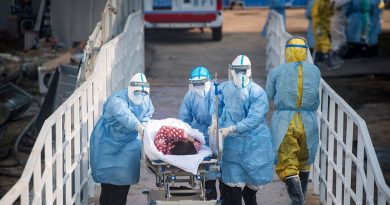Wider consultation needed before going ahead with radar search of former residential schools
WARNING: This story contains details some readers may find distressing.
Officials from the Cree Nation of Chisasibi in northern Quebec plan to widen consultations with former students before deciding whether to move forward with a ground penetrating radar search of former residential school sites located on Fort George Island.
Fort George Island, which is near present-day Chisasibi, was the site of the first two residential schools in Quebec — St. Philip’s Indian Residential School (Anglican), which opened in 1933, and the Fort George Roman Catholic Residential School (also known as Ste. Therese de l’Enfant Jesus school), which opened in 1937.
But because of fire and other changes over the years, there were five different school sites built to house the two schools between 1933 and 1981.
Three of them were Anglican and two were Catholic, according to Chisasibi Deputy Chief Paula Napash, who is the person leading the consultations.
We have a very unique and complex situation.– Paula Napash, Deputy Chief Chisasibi
“In Fort George, we have a very unique and complex situation,” said Napash.
Ground penetrating radar was used earlier this year to locate unmarked graves at former residential schools such as Kamloops Indian Residential School in B.C. and the Marieval Indian Residential School in Saskatchewan, among others.

Local support
Consultations were held locally in Chisasibi in November and the majority of survivors wanted to move forward with a ground penetrating radar search on Fort George Island in the wake of the discoveries of potential unmarked graves, said Napash.
“It opened old wounds, but it also affected them deeply,” said Napash, adding many recall seeing things at the school or hearing stories and really wanting to know the truth.
“[For many] it was like starting over again in their healing journey … that’s why it’s so delicate,” said Napash.
There was also agreement that survivors who attended the Fort George Island schools from other communities also needed to be consulted before a decision was made.
“We had students from all over the coast of James Bay, Hudson Bay and even Ontario,” said Napash.
Students from all over
She said students came from places such as Albany, Attawapiskat, Moosonee in Ontario, as well as Mashteuiatsh (Pointe-Bleue), and other Cree communities such as Eastmain, Whapmagoostui (Great Whale), Wemindji (Old Factory River, Paint Hills) Waskaganish (Rupert House) and Nemaska and others.
We don’t want to exclude anyone. Fort George was their home too.– Paula Napash, Deputy Chief Chisasibi
“We don’t want to exclude anyone. Fort George was their home too. They were part of the community,” said Napash. She said she will be reaching out to band councils in those communities soon, to map out a way forward.
Fort George Island was the original townsite for Chisasibi people before they were forced to relocate in the early 1980s because of hydroelectric development.
The National Centre for Truth and Reconciliation has records that there are the remains of 16 former students buried on Fort George Island.

The schools, cemeteries and residences built through the years on Fort George Island were all in different locations, in some areas they are now covered in sand, debris, trees and in some cases, even cabins, said Napash.
“It’s not a flat surface,” said Napash, adding they are also consulting with experts to look into other technology besides ground penetrating radar that might provide a more complete picture of what is beneath the ground.
Napash is in touch with experts in the technology, including the radar specialist who conducted the search at the Kamloops Indian Residential School, Sarah Beaulieu, who is also an instructor at the University of the Fraser Valley in Abbotsford, B.C.
Napash said Chisasibi officials are also still investigating stories of other possible sites connected to the schools on Fort George Island.
Support is available for anyone affected by the effects of residential schools, and those who are triggered by the latest reports.
The Cree Board of Health and Social Services of James Bay operates the Wiichihiiwaauwin (Mental Health Helpline) at 1-833-632-4357. Support is available in Cree 24/7.
The Indian Residential School Survivors Society (IRSSS) can be contacted toll-free at 1-800-721-0066.
A national Indian Residential School Crisis Line has been set up to provide support for former students and those affected. People can access emotional and crisis referral services by calling the 24-hour national crisis line: 1-866-925-4419.





